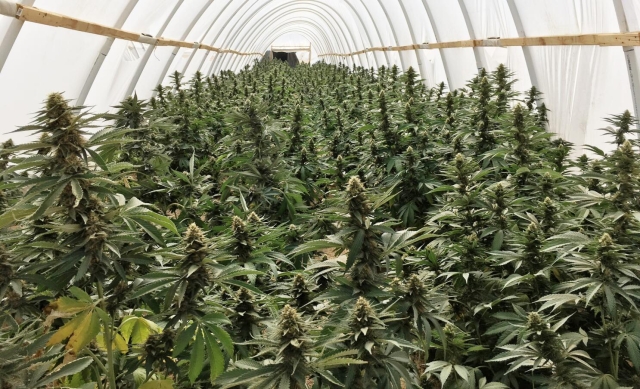
Editor’s Note: Even though the vote on this issue did not go our way, we are keeping this piece posted on OTR so readers can see for themselves whether the author's predictions following the vote are coming true.
The $30 billion-dollar commercial marijuana industry is following Big Tobacco’s model of maximizing profits by getting more and more people addicted to its products. Ohioans now find themselves in the marijuana industry’s crosshairs—with a choice to make.
After the marijuana industry wrote its own law to legalize marijuana for recreational use, then paid to get it on the state’s Nov. 7 statewide ballot, Ohioans will be the ones who decide if casual, non-medical marijuana use should become legal and if new marijuana farms and stores should be allowed to open across the state.
Do we go the way of states like Colorado and Washington that legalized recreational marijuana almost a decade ago and are now suffering the consequences or join the recent wave of states that have rejected it, after learning the lessons of the earlier states’ failed experiments?
My 22 colleagues in the Ohio Senate and I believe this blatant cash grab should be rejected. That is why we voted for Senate Resolution 216, urging citizens to join us in rejecting this sweetheart deal for the marijuana industry.
Proponents claim marijuana is just like alcohol, that health concerns are overblown, opposition to widespread marijuana access and use is irrational and that legalization actually reduces crime. Of course, that also just might be the dismissive “rush to buy” you would expect from salesmen who stand to make up to $4 billion a year.
The reality is that the sell-job claims are false and that the experiences of other states show that legalizing recreational marijuana is a mistake, bringing significant problems for health, safety and the workplace, while actually increasing problems with crime and illicit drug use.
The health and safety of Ohio’s children are the greatest reasons to keep recreational marijuana illegal. States that have legalized have seen increases in marijuana poisonings of children and increases in emergency room visits by children from accidental ingestions. Colorado, for instance, saw an alarming spike in emergency room visits from accidental marijuana ingestion by children after legalization.
This is hardly surprising given that today marijuana comes in forms appealing to children, such as gummies, lollipops, baked goods and sodas. This is why Ohio’s children’s hospitals have come together to oppose marijuana legalization.
A risk to all Ohioans would be found on our roads. Research by the insurance industry shows that states that legalize marijuana see fatal crashes increase 4.1% and injury crashes increase 6 percent. In Ohio, that has been projected to mean 48 more traffic deaths and 2,300 more traffic injuries annually. Knowing that, why would anyone vote to make that increased suffering a reality?
Crime has also been found to go up as illicit marijuana sales increase due to increased demand for lower-priced, untaxed products. These and other concerns are why Ohio’s police, police chiefs, and sheriffs have come together to oppose marijuana legalization.
The workplace also becomes more dangerous after legalization. Unlike alcohol, marijuana remains in the body for up to a month, making it hard for employers to test employees for impairment. In other states that have legalized, marijuana has increased the rates of employees who come to work high; impaired employees are known to drive-up rates of industrial accidents and have more absenteeism.
This creates challenges to maintaining safe workplaces, especially in industries that require high alertness and precision like Ohio’s manufacturing businesses. These concerns have led the Ohio Chamber of Commerce, the Ohio Manufacturers Association and the Ohio Business Roundtable to oppose legalizing recreational marijuana.
But what about the money? Won’t the taxes make it all worth it? Hardly. The 10% tax the marijuana industry has written for itself would be one of the lowest in the country, with no money ear-marked for the counties that administer the human services programs which will have to manage the increased abuse and addiction.
Even worse, the marijuana industry wrote the law in such a way that it will get back as much as one-third of the taxes to fund new marijuana farms and shops. It would be a great deal for them, but it would be a rip-off for Ohioans.
As Ohioans approach this decision, we have the benefit of seeing how marijuana legalization has impacted other states. The effects on children, highway safety, the workplace, crime—as well as the self-serving rip-off of tax revenue the industry has planned for us—should all be flashing warning lights. The marijuana industry’s proposed law is a bad deal for Ohio.
